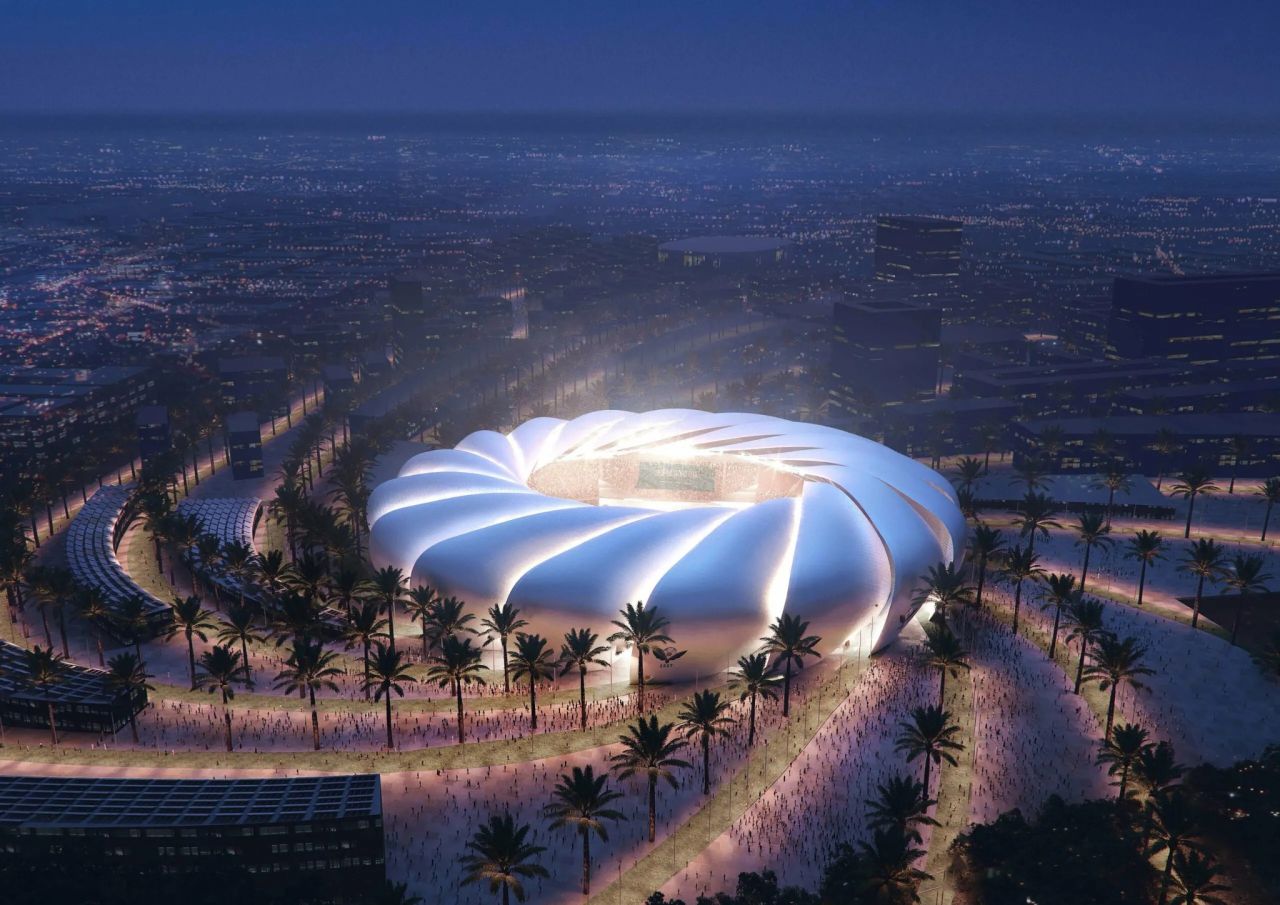Dar Al-Handasah Consultants (Shair and Partners), commonly known as Dar, has recently announced the completion of the detailed design and sustainability strategy for the Aramco Stadium, a significant development in Al Khobar. This stadium, with a seating capacity of 47,000, represents a collaborative effort between Aramco and the state-owned real estate developer ROSHN.
Designed to meet international standards, the Aramco Stadium is poised to host some of the world’s most prestigious football competitions. Among these are the 2027 AFC Asian Cup and the FIFA World Cup in 2034, for which Saudi Arabia is actively bidding. The design of the stadium aligns with the stringent requirements set by these global sporting events, ensuring that it meets the highest standards of quality and functionality.
A key highlight of the stadium’s design is its unique roof and façade system, which was meticulously developed by Maffeis Engineering, a sister company of Sidara. This aspect of the design not only enhances the stadium’s aesthetic appeal but also contributes to its overall functionality, providing fans with an unparalleled viewing experience while adhering to international architectural standards.
Beyond the stadium itself, Dar has also completed the detailed design for the surrounding mixed-use masterplan facilities and infrastructure. This comprehensive approach ensures that the entire area around the stadium is developed to support a wide range of activities, making it a vibrant hub for both sports and community events.
Central to the project is its focus on sustainability, a priority reflected in the stadium’s design and construction processes. Dar has crafted a sustainability strategy that aims to achieve LEED (Leadership in Energy and Environmental Design) and Mostadam certifications. These certifications are benchmarks for sustainable building practices, signifying the project’s commitment to environmental responsibility. The strategy includes various measures designed to enhance energy efficiency, both passive and active, by incorporating demand response technologies that optimize energy usage. Additionally, the strategy emphasizes the reduction of water use, the diversion of operational waste away from landfills, and the specification of eco-friendly, local, and recycled materials in the construction process.
The construction of this new stadium has already begun, marking a significant milestone in the project. The stadium is expected to be a landmark in Al Khobar, serving as a central venue for major sports events and a catalyst for further development in the region. With its cutting-edge design, focus on sustainability, and capacity to host world-class events, the Aramco Stadium is set to become a key asset in Saudi Arabia’s sporting infrastructure, contributing to the Kingdom’s Vision 2030 goals by fostering local talent, attracting international competitions, and promoting sustainable development practices.




